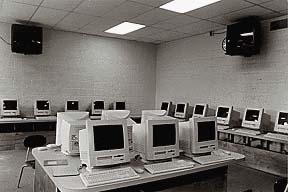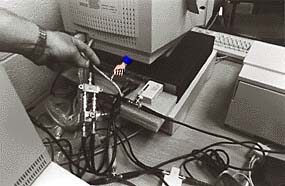With the creation of CamNet also came a host of problems, some of which were foreseen, others not. Sumler reports that the high demand for Internet access within the public library and the steady volume of use were predictable. The library, however, had enough funds to set up only five public workstations with Internet access; the number of computers will increase as funds become available.

What was not predictable was the extent to which the scope of the CamNet project with the schools exceeded expectations. The demand for Internet access in the schools expanded and enhanced the CamNet project. From the initial concept of interconnectivity among the schools and to the library with access to library catalogs, databases, and text on the Internet, it expanded quickly to encompass the World Wide Web. CamNet began with an expectation of limiting each school to four computers and has expanded to 250 per school.

The other problem that the Camden County Library staff did not predict was users’ frequent and blatant viewing of pornographic images from the Internet at the library’s public access work stations. Library staff assumed that making monitor screens highly visible to passing patrons and staff would keep users discreet and conservative in their choices. That has not proven to be the case. Instead, users are bold in their Internet selections and do not seem inhibited about displaying explicit or offensive materials on their screens. The problem has vexed Sumler and her staff, especially because confidentiality is an important value in the library, and librarians purposely do not monitor how patrons use the Internet workstations.
CamNet began with an expectation of limiting each school to four computers and has expanded to 250 per school.
After receiving some complaints, the library staff installed Cyber Patrol software to block the display of offensive pictures on library workstations but found it too cumbersome to maintain. Instead, the library hopes to resolve the issue by purchasing new tables for the public access Internet workstations. Monitors can be recessed into these tables to afford users greater privacy and their work less visibility to passers-by. CamNet schools experience the same problem, but in schools it is possible for staff to monitor Internet use and to deal with specific offenders rather than to limit access for all. In short, the schools have a more controlled user environment and are concerned with meeting specific educational objectives; the public library focuses on facilitating open inquiry.

